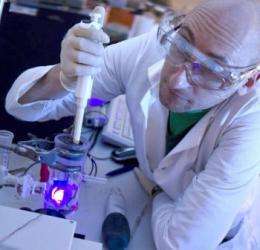Scientists battle harmful water toxins

University of Ulster scientists are collaborating with international research partners to develop a new 'clean' technology to destroy water toxins caused by harmful algal blooms.
The research team, which is led by Dr Tony Byrne and includes Dr Patrick Dunlop and Dr Jeremy Hamilton, is based at NIBEC, Ulster's Nanotechnology and Integrated Bioengineering Centre at the Jordanstown campus where clean technology is a key research theme.
Dr Byrne explains: "Clean Technology is a term used to describe knowledge-based products or services that improve operational performance, productivity or efficiency, while reducing costs, inputs, energy consumption, waste or pollution.
"The increase of harmful algal blooms in estuaries and freshwater aquatic systems around the world is a major global problem because of the serious threat they pose to wildlife, livestock and humans," he said.
The seriousness of the problem on a local scale was highlighted this summer when harmful algal blooms were spotted on Loughbrickland Lake close to Banbridge in Co Down, and Moor Lough near Strabane, Co Tyrone. Both lakes, which are popular with anglers and used for water based recreation activities, were closed to members of the public for several weeks.
Algal blooms occur naturally but not all pose a risk to humans or animals. However, an increased supply of limiting nutrients in water due to pollution will increase the likelihood of harmful algal blooms.
Dr Tony Byrne continues: "Blooms containing cyanobacteria, sometimes called blue-green algae, can pose a serious threat, as these micro-organisms can produce and release a variety of cyanotoxins. These toxins include hepatotoxins, dermatotoxins, and neurotoxins with extremely high toxicity.
"Titanium dioxide is a white powder which is used in sunblock, paint, cosmetics and even some food products (E171). It is a non-toxic pigment but when excited by ultra violet light (UV), it becomes a powerful catalyst capable of destroying pollutants in water.
"This process is called photocatalysis and our challenge is to increase the solar efficiency because sunlight contains only a small proportion of UV. We have already demonstrated the destruction of the cyanotoxins under laboratory conditions using new catalysts under solar light but we need to fully understand the mechanism."
Provided by University of Ulster













